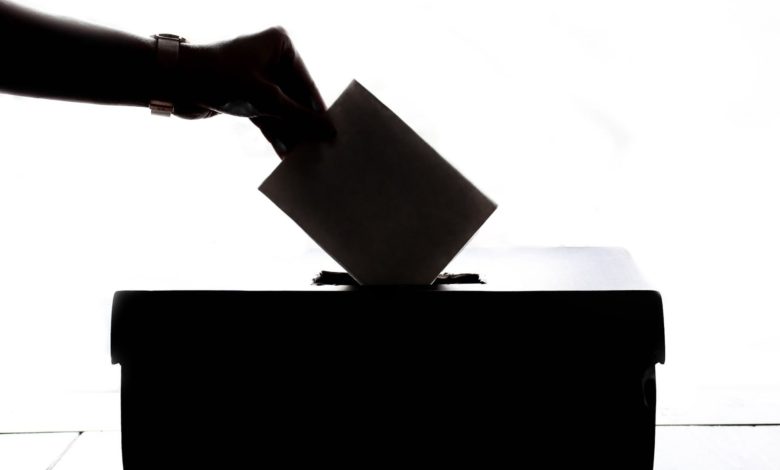Commentary: Ranked Choice Voting Could Help Fix Illinois Politics

By Ben Chapman
benbart.chapman@gmail.com
Machine. Hegemony. Establishment. Deep State. The Back Room.
Whatever you call the ominous forces that corrode our politics and entrench corruption, I’m sick of it. And from what I’ve heard, many other Illinoisans are, too.
We’re sick of rich donors and well-funded committees deciding who wins elections. We’re sick of partisans and incumbents designing election systems that favor themselves. We’re sick of politicians displacing the dignified art of debate with smearing and mudslinging. And we want more options for governor than millionaires and billionaires.
In bids for public office, politicians may brand themselves as fresh-faced reformers with plans to completely fix the political landscape. But after they are elected and reality hits, voters are often disappointed.
Badly needed systemic political change has remained elusive for a long time — but thanks to some plucky activists, determined nonprofits, and benevolent politicians, change is now visible on the horizon.
A promising electoral reform known as “Ranked Choice Voting” (RCV) is steadily spreading across the United States. It is tectonically shifting how candidates campaign and how voters vote.
Many municipalities already use RCV for local elections. These include Berkeley, San Francisco, Cambridge, Minneapolis, St. Paul, Santa Fe, and others.
RCV is also used in nations such as Australia, New Zealand, and Ireland for various elections. In 2016, Maine adopted RCV statewide, and Massachusetts appears poised to follow suit.
Nonprofits and advocacy groups such as FairVote, The League of Women Voters, Common Cause, and Represent.Us are all campaigning in support of RCV because of its ability to produce freer, fairer elections — and as a result, better governments.
While RCV is simple from the voter’s perspective, the mechanics of the vote counting process are awkward to explain via writing. For more visually inclined readers, this video explains RCV clearly. The text below will also explain.
On an RCV ballot, voters are able to rank candidates in order of preference. The first choice is their first favorite, the second is their second favorite, and so on.
Votes are counted in rounds. In the first round, only the first choices of voters are totaled. If a candidate receives over 50% of those votes, they win. If not, the last place candidate is eliminated and the votes that supported that candidate are redistributed to the second choices of those voters.
Votes are re-tallied, and if there is still no candidate with over 50% of the vote, then the new lowest candidate is eliminated and the votes are tallied again. The counting ends when one candidate has a majority of votes.
While the counting process may seem strange, the voting process is very simple and intuitive to voters. A voter can think of their vote as “transferring” between candidates in order of preference.
When they cast their ballot, voters basically say, “I prefer Candidate A, but if I can’t have Candidate A, then I’ll support Candidate B. If I can’t have Candidate B, then Candidate C is fine.”
In this way, RCV allows for a more precise explanation of the voter’s preferences — but it has many benefits beyond that.
One major benefit is that Ranked Choice Voting significantly reduces the effects of “vote splitting” and “vote spoiling.”
In the 2000 Presidential Election, Ralph Nader was accused of “spoiling” the election for Al Gore.
Gore and Nader both hailed from the left side of the political spectrum and they fought over the same voters. The effect was, liberal voters were “split” between the candidates, “spoiling” Gore’s chances and potentially allowing George W. Bush an unearned victory.
Some Democrats still blame Nader for helping the Republicans — but that’s not a fair accusation. Nader had a Constitutional right to run for President and voters had a Constitutional right to vote for him. After all, we have fair and free elections, right?
Fault for the awkwardness of the 2000 Election is best placed on our flawed electoral system, rather than any single person. And Ranked Choice Voting could alleviate this flaw.
Under RCV, Nader voters would have ranked Gore second, so that when Nader was eliminated, their vote would transfer to Gore and he would receive their support. The Nader voters would be “settling” for Gore, but they would still be happier than if Bush had won.
For another, more recent example of spoiling in Illinois, consider the the 2018 Illinois Governor’s General Election.
Libertarian Party Kash Jackson and Conservative Party Sam McCann won a combined 6.6% of the vote, likely splitting nearly all of that support away from Governor Bruce Rauner, who came up short against Democrat J.B. Pritzker.
The problems of splitting and spoiling place heavy, unfair hands on the scales of our election results. Fortunately, RCV can fix this because it forces a candidate to win with a majority. It means that true mandates will have to be won.
A recent example of vote “splitting” is the Chicago mayoral race.
The race was flooded with over a dozen candidates, and while this meant a healthy variety of options for voters, it also meant that the total vote counts would be split widely between the options.
The victors of the primary, Lori Lightfoot and Toni Preckwinkle, only won 17.5% and 16% of the vote respectively. Those are not significantly large enough numbers to claim any truly broad of support.
Under RCV, Lightfoot would have to win a true majority in order to win the election. She would need to prove broad support and would have to win a mandate to govern.
As another benefit, RCV can break up the two-party system.
A 2017 Gallup poll shows that 42% of Americans identify as politically independent of any party, yet neither the 116th U.S. Congress nor the 100th Illinois General Assembly have any members from non-major parties.
While there are multiple factors contributing to that incongruency, our broken electoral system is one of them. RCV could change this.
Under our current system, voters are afraid to “waste” their vote on a third party candidate who has low likelihood of winning.
For example, even if a voter truly supported 2016 Libertarian Party Presidential Candidate Gary Johnson, the voter might be guilted into voting for a more viable major party candidate like Trump or Clinton who might have a real chance at winning.
Counterintuitively, this effect can worsen when major-party candidates are especially disliked.
In the 2016 election, fairly or not, both Clinton and Trump were deeply unpopular. In a logical system, this would mean they would receive few votes.
However, many voters were so afraid of Trump winning that they were essentially threatened into voting for the opposing major party candidate, rather than voting for a third party that they actually supported. This effect occurred on both sides of the aisle.
In this way, our current system lets major political parties to hold voters hostage.
Candidates don’t actually have to be good to win elections, they just have to show that the other candidate is worse. Modern campaigns are less about proving one’s own viability and more about inventing the best smears and takedowns of an opponent.
The candidate who can spend the most on negative ads, perform the most opposition research, and come up with the best lies and insults, will win the day. And all the voter can do is glumly check the box next to a lesser evil.
Ranked Choice Voting can change that.
Under RCV, voters can’t be intimidated out of voting for a third party. If they cast their RCV ballot ranking a third party candidate first and that candidate is eliminated, then they can simply rank a more reasonable major party candidate second or third and their vote will eventually go to that lesser evil.
No skin off the voter’s back.
As some advocates say, “Ranked Choice Voting allows you to vote your hopes, not your fears.”
Another benefit of RCV is that it encourages civility in campaigns — especially compared to our current system.
If, in our current system, a candidate appears similar to another candidate, they risk splitting votes with them and suffering a disadvantage. Essentially, candidates are punished for agreeing with each other.
Under RCV, candidates know that if voters are undecided between two options, they can simply rank one of them first and the other one second. That way, the punishment for agreeing with another candidate is minimal, and it may even be an advantage.
RCV actually makes mudslinging risky for candidates because if they run negative ads about another candidate, they risk offending the voters who like that candidate and they might miss out on the chance to be the second or third choices of those voters.
In fact, a noteworthy example of how RCV alters politics is the San Francisco Mayoral Election of 2018.
Two candidates, Mark Leno and Jane Kim, agreed so much that they teamed up and shared campaign resources. This coalition-building is a stark contrast to the status quo in which fellow candidates are practically required to smear each other.
RCV rewards candidates who bring people together, not those who tear them apart.
Some argue that coalition building among candidates is cheating — but this argument misunderstands something basic about the purpose of elections.
Elections are about deciding our next leaders. Don’t we want leaders who can build consensus, work through disagreements, and find common ground? Don’t we want leaders that make connections and form alliances? Don’t we want to become a more “united” people?
For the reasons listed here and more, movements in favor of RCV have sprung up across the country.
Voter Choice Massachusetts, a Massachusetts advocacy group, is edging closer and closer to success in bringing RCV to statewide elections.
The nonprofit FairVote, after successfully bringing RCV to Maine, is campaigning in municipalities across America. One of these municipalities is Chicago, where FairVote Illinois is operating.
Chicago recently voted in Mayor-Elect Lori Lightfoot, who has expressed support for RCV. This development is sure to spark optimism for FairVote Illinois.
Meanwhile, in downstate Illinois, yours truly is a member of the Illinoisans for Ranked Choice Voting, a group that is testing the waters in Champaign County’s municipalities for opportunities to implement RCV.
Our group so far has won support from local organizations such as the Champaign County Voter’s Alliance and UIUC Student Action, as well as five Champaign County Board Members and an Urbana City Council Member.
RCV takes power from partisans and gives it to voters. It allows us to vote for who we truly believe in — not just a lesser evil.
RCV means voting our hopes, not our fears.
Machine. Hegemony. Establishment. Deep State. The Back Room.
Whatever you call it, I’m sick of it. And while it’s going to take more than Ranked Choice Voting to free us from its grasp, it’s a heck of a start.




